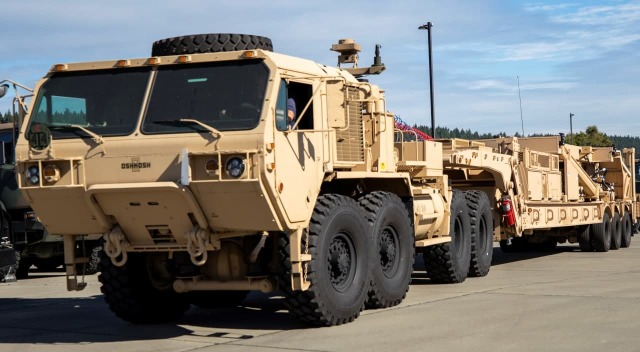Washington. October 16. INTERFAX - The US military plans to carry out three test launches of ground-based hypersonic missiles under development in the coming 18 months before putting them into service in 2023, said the head of the US Army Hypersonic Development Department, Lieutenant General Neil Thurgood.
"There will be three flight tests in the 2022 fiscal year (started on October 1) and additional tests in 2023," he said in an interview with Defense News following the results of the US Army Association conference.
At the same time, he stressed that these final flight tests will be conducted directly by the combat units to which they will be delivered, and not by the developers. "We gave them equipment so that they could train now and be ready to get real ammunition for shooting," the general said. According to Thurgood, this will allow the military to be prepared for their use by the time the systems are put into service.
According to photos of the US Army published this week, the first tractors with trailers, on which containers are installed for launching hypersonic ground-based missiles of the Long Range Hypersonic Weapon (LRHW) system, called Dark Eagle, have been delivered to the Lewis-McCord base in Washington state.
There is no data on the presence of the missiles themselves in the containers. Meanwhile, according to the US Army, in addition to Oshkosh M983A4 tractors with trailers, "other components" of complexes were delivered to the base, the purpose of which was not disclosed. It is indicated only that they will allow military personnel to conduct a full cycle of training on working with complexes.
It is planned that the deployment of the first combat-ready American battery with hypersonic missiles will be carried out in 2023.
According to the Pentagon, the battery of the LRHW ground complex consists of a command and staff vehicle and four heavy transporters with two containers on each with hypersonic missiles. The range of hypersonic missiles being developed for the US Army will be more than 2,775 km. The speed of the planning hypersonic unit reaches Mach 17.
During the test on March 19, 2020, an American hypersonic missile hit a target with a deviation of only 15 cm from it . The flight test was conducted on the Hawaiian island of Kauai. The gliding unit flew at hypersonic speed to the target. The very first successful flight test was conducted in October 2017.
The tested hypersonic unit (The Common-Hypersonic Glide Body or C-HGB) is universal for weapons systems of the US Army and Navy. It can maneuver in altitude and course, which makes it impossible to intercept it, according to the Pentagon.
The development of a new ground-based hypersonic weapons complex in nuclear and non-nuclear equipment is carried out within the framework of the Operational Fires (OpFires) program of the Office of Advanced Research Projects of the US Department of Defense (DARPA) and a contract with Lockheed Martin Corporation.

